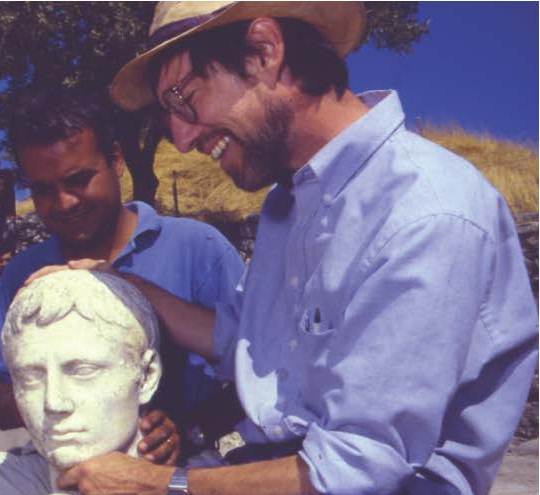Affiliation: University of Pennsylvania

Professor Brian Rose is the James B. Pritchard Professor of Archaeology at the University of Pennsylvania, and is Past President of the AIA. He holds his degrees from Columbia University (Ph.D.) and Haverford College, and his specialties include Roman art and archaeology, and the archaeology of Anatolia. He has conducted field work at Aphrodisias, is Co-Director of the excavations at Gordion in Turkey, and is head of the post-Bronze Age excavations at Troy. Professor Rose has held both the AIA’s Norton and Joukowsky Lectureships.
See Brian Rose’s work in the American Journal of Archaeology:
The wars in Iraq, Afghanistan, and Syria during the last 16 years have profoundly influenced who we are and what we do as scholars dealing with the art and material culture of antiquity. This talk draws heavily on my own experiences with museums, foreign wars, and archaeology, beginning with a discussion of the ways in which the past now dominates the present, and followed by an overview of cultural heritage destruction and preservation programs in conflict zones. This leads to the subject of museums and repatriation requests in an age of increasing nationalism.
This lecture focuses on a series of monumental tombs near Troy discovered during the course of the last fifteen years. There are five tombs in all, dating from the late Archaic to the Early Hellenistic period, and most of them were set up by wealthy Anatolians who were associated with the Persian governor (or satrap) at the regional capital of Daskyleion. The tombs include a marble sarcophagus (ca. 500-490 B.C.) featuring the murder of Polyxena, daughter of Priam. This is the earliest stone sarcophagus with figural scenes ever to have been found in the eastern Mediterranean. Another sarcophagus within the same tomb contained the body of a child surrounded by gold jewellery and silver symposium implements. A new sarcophagus from the modern city of Çan (ca. 400-375 B.C.) contains a biographical narrative of the deceased, showing him victorious in a boar hunt and then spearing a fallen Greek foe in the eye. Nearly all of the original paint still survives intact. All of these are Graeco-Persian products, produced primarily by Greek artists employing Persian iconography.
Located approximately 100 km southwest of Ankara, Gordion was continually inhabited for nearly 4000 years and is one of the most important archaeological sites in the Near East. Its heyday was in the first half of the first millennium BCE when it was the royal capital of the powerful Iron Age kingdom known as Phrygia to the Greeks and Mushki to the neighboring Assyrian empire. Gordion’s fabled king Midas, in myth cursed with asses’ ears and the “golden touch,” was actually an historical figure, and the monumental burial mound (Tumulus MM) that bears his name was probably one of his first building projects. This talk prese’ts an overview“of the most r”cent ieldworkk conducted under the auspices of the Penn Museum, including new discoveries with the “Midas Mound” and a new circuit of fortifications revealed by remote sensing.
In 1988 archaeologists from the University of Cincinnati and the University of Tübingen, Germany, began new excavations at Troy with the intent of examining all phases of habitation- from the Bronze Age through the Byzantine period. This lecture presents the results of the Bronze Age, Greek, and Roman excavations at the site during the last 24 years. Work has concentrated primarily on the theater, temple of Athena, the Bouleuterion or Council House, and the Sanctuary of the Samothracian Gods. The Bronze Age fortifications and Roman houses in the Lower City have also been extensively investigated. Excavation thus far has clarified the nature of habitation at the site during the late Bronze Age (15-12th centuries B.C.), as well as the rise in the city’s fortunes during the reign of Augustus and his Julio-Claudian successors. The relationship between the recent discoveries at the site and the Homeric tradition are also considered.